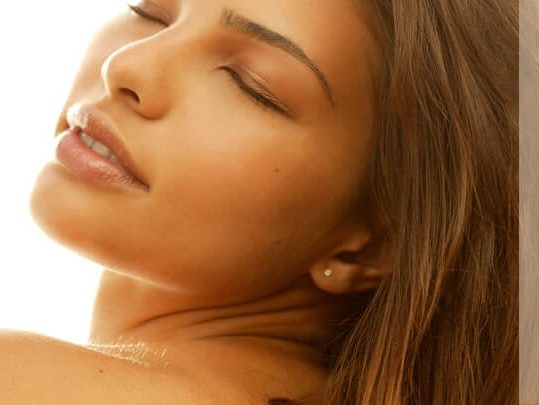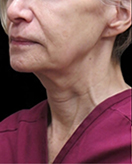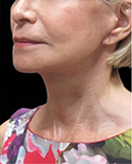Fat Grafting
Conveniently located to serve the areas of New York, NY

As part of the natural aging process, people gradually lose some of the underlying fat stores that help to give our skin youthful fullness and volume. When collagen production slows and natural fat is depleted, we begin to see changes that can make us look tired and older. In the face, cheeks begin to look hollowed, facial lines and wrinkles form, and the lips become thinner. Loss of soft tissue volume in the hands can make veins look more prominent, while the skin becomes loose and wrinkled. Natural fat grafting, also known as fat transfer, can help restore youthful volume and reduce the signs of aging in the face, lips, and hands. Fat grafting may also be used to enhance and augment volume in other areas of the body, such as the buttocks and breasts, as well as to correct irregularities or defects from previous liposuction, reconstruction, or other cosmetic procedures.
Contents
During the fat grafting process, fat is harvested from areas of the body that have fat to spare, and then meticulously transferred to areas that may benefit from increased volume. The key to successful fat transfer lies with the surgeon’s technique. Fat must be harvested gently and handled carefully to ensure fat cell survival. Distributing the harvested fat to attain long-lasting, natural-looking results requires a combination of surgical precision and artistic sensibility. With years of experience and the most advanced tools at his disposal, Dr. Levine is able to maximize long-term fat survival, while helping to achieve beautiful, outstanding results.*
Procedure
- Soften facial lines and wrinkles
- Reduce bags under the eyes
- Restore youthful volume to hollowed cheeks
- Improve the appearance of nasolabial folds and marionette lines
- Smooth out skin irregularities
- Add volume to lips
- Enhance chin contours
- Lift, shape, and augment the buttocks
- Add youthful volume to aging hands
- Enhance breast volume and contours (in selected cases)
- Provide a natural-looking and long-lasting alternative to temporary tissue fillers
- Correct irregularities from previous liposuction procedures
Ideal Candidate
People who want to improve contours and add fullness in areas of insufficient or depleted volume may be good candidates for natural fat grafting. People who want to smooth wrinkles and reduce the signs of facial aging, as well as those who want a natural-looking, long-lasting alternative to dermal fillers, may also want to consider this procedure.* Fat grafting may also benefit patients who wish to correct uneven contours and other irregularities from previous liposuction procedures. The most common areas to treat with fat grafting include the face, buttocks, and hands. In select cases, fat grafting may be used to enhance volume and shape in the breasts. Dr. Levine will gladly meet with you to discuss whether you are a good candidate for natural fat grafting.
| FAT GRAFTING SURGERY AT A GLANCE | ||
| Procedure* | Recovery* | Post-Op Care* |
| Performed in our in-office surgical facility | Go home same day | For facial procedures, no special post-op care is needed |
| Surgery time varies depending on the extent of the procedure; can range from less than 1 hour up to 3 hours | Back to work in 1-3 days for minor procedures; 5-10 days for more involved procedures | For buttock or breast augmentation, compression garments are recommended for 2 weeks |
| Local or twilight anesthesia | Light exercise in less than a week | |
| More strenuous exercise in 2-3 weeks | ||
Procedure in Detail
Excess fat is gently removed from targeted areas of the body, such as the abdomen, hips, or thighs, using a very small tube, called a cannula. The fat is then prepared and carefully re-injected into areas that will benefit from increased volume. Care is taken in order to maximize fat graft survival and effect the most natural-looking distribution.*
Other Procedures
Absolutely. In fact, fat grafting can often dramatically improve the results of a wide variety of facial and body procedures, such as face lift, tummy tuck, browlift, neck lift, body contouring, liposuction, and buttock augmentation. Dr. Levine will discuss with you which procedures or combination of procedures may best suit your specific needs.
Preparation
During your initial consultation, Dr. Levine will thoroughly discuss your goals and expectations, including possible risks and the best way to prepare for your surgery. He will let you know what to expect before, during, and after your procedure, and he will answer any questions that you may have.
Anesthesia Types
We recommend local or twilight anesthesia for fat grafting surgery. You will discuss your procedure thoroughly with both Dr. Levine and our board-certified anesthesiologist to determine the best type of anesthesia for your needs.
Expectations
Fat grafting can be performed on an outpatient basis in our state-of-the-art, in-office operating suite, which is accredited by the American Association for Accreditation of Ambulatory Surgery Facilities (AAAASF). The length of your surgery will depend on the extent of your procedure. Minor treatment can take less than an hour. More extensive procedures may take between 1-3 hours.* After your surgery, you will be taken to our warm and caring recovery suite, where our licensed, registered nurse will make sure you are comfortable and assist in your recovery. You will be able to go home the same day with a friend or family member.
Post Procedure
Every surgery is different, and you will receive detailed post-operative instructions for your specific needs. In general, you can expect mild to moderate swelling in the days following surgery. For fat grafting to the face or hands, patients usually report little to no discomfort. For fat grafting to the buttocks or breast, most patients report mild to moderate pain after the surgery, which is usually well-tolerated with medications.* At Plastic Surgery & Dermatology of NYC, our concern for you doesn’t end when you go home. We’re dedicated to providing ongoing care to ensure a fast, safe, and smooth recovery. Dr. Levine will see you for post-operative visits, and he and our staff stand ready to answer any questions you may have about your recovery, as well as your overall health and well-being.
Results
One of the many wonderful qualities that sets us apart at Plastic Surgery & Dermatology of NYC is our ability to use a multidisciplinary approach to optimize results. With expertise in both plastic surgery and dermatology, Dr. Elie Levine and Dr. Jody Levine work together to help prepare, protect, and treat the skin before, during, and after your procedure. As one of New York’s leading dermatologists, Dr. Jody Levine will customize a skincare regimen that includes pre-surgical measures to optimize your skin, as well as post-surgical skincare that can help prevent irritation, alleviate bruising and inflammation, and promote faster healing. Unlike other practices, we include these unique pre- and post-surgery skincare packages as part of your surgical plan. Our pre-surgery facials and microdermabrasion treatments help prepare your skin for surgery and ensure the best recuperation. Post-operative packages include lymphatic massage with our skilled medical aesthetician in order to enhance circulation, support healing and improved immunity function, and leave the skin looking radiant and healthy.* With our extensive array of lasers, we are able to provide post-surgical laser treatments to best accelerate your healing. The Drs. Levine will be happy to discuss with you the best skincare approach for your specific needs.
Contact
Dr. Elie Levine will be happy to meet with you to discuss post-bariatric weight loss procedures. Please call our office at (212) 988-1800, or make an appointment online for a personal consultation in our New York City offices.

